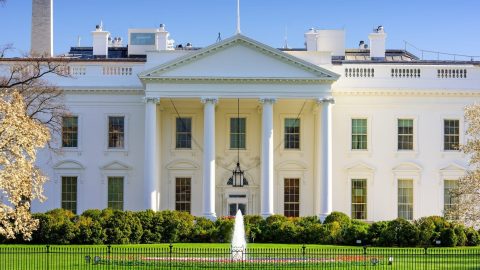Articles about “central banks”

Central banks are becoming more cautious: these are the implications for the bond market
The investment package in Germany and the associated ‘abandonment of the debt brake’ has caused a lot of movement in the eurozone bond market. Meanwhile, central banks have to manage the balancing act between slowing economic growth and rising inflation. Dániel Bebesy, Fixed Income Portfolio Manager at Erste Asset Management Hungary, talks in an interview about the recent central bank meetings and their impact on the bond market.
Interest rate cuts and economic growth – a favourable environment for the markets
Even though the ECB recently left its key interest rate unchanged, central banks are increasingly signaling an inclination to cut interest rates for the first time. At the same time, the indicators point to good economic growth at a global level. These are positive signals for the stock markets.
Increasing optimism for a “soft” economic landing
While equities have recently risen, yields on the bond market have weakened. The markets are being supported by increasing hopes of a “soft” landing for the economy. What are the chances of this scenario?
Inflation in Europe likely to have peaked
Inflation data in Europe recently showed a surprisingly significant slowdown. The decline in energy prices in particular had a dampening effect. Read our latest blog post to find out about the current inflation in the individual EU countries.
A tale of two volatilities
The volatility of bonds has increased significantly and is clearly higher than that of equities. What are the reasons for this difference in development?
Central banks weigh risks
Most recently, central banks have signaled a somewhat less sharpish stance, as an effect of the rapid key rate hikes on the monetary environment has already become visible. However, recent economic data are dampening hopes for a rapid decline in inflation, as Chief Economist Gerhard Winzer explains in his market commentary.
Game Changer
The current crisis of confidence continues to dominate market activity and has significantly increased uncertainty about the future development of economic indicators. Read more in the current market commentary by Chief Economist Gerhard Winzer.
Calibration
Central banks and markets are in a calibration phase. The question is how many key rate hikes are needed to be able to confidently expect inflation to fall in the direction of 2%. Particular attention is therefore once again being paid to the US inflation data, which will be published today, Tuesday.
Tug of war
At present, indicators on inflation and economic activity are competing to determine which of the two categories is more important for the financial market. Read more in the current market commentary by Chief Economist Gerhard Winzer.
Hawkish holidays from the Bank of Japan
Last week, the Japanese central bank made the last major monetary policy decision of 2022, bringing an eventful year to an end – also from a central bank perspective.
One month is not yet a trend
The rise in inflation in the USA was recently lower than expected, which led to a significantly brighter mood on the markets. However, a favourable inflation report is not yet a trend, as Chief Economist Gerhard Winzer emphasises.
Review and outlook: “2022 turned out to be a tough year for equities”
On the stock markets, the year 2022 was characterized by high uncertainties and volatility. Tamás Menyhárt, senior fund manager at Erste Asset Management and equity expert, therefore draws an initial summary of the stock market year and ventures an outlook for the coming months on the markets.
Monetary tightening even as growth slows further?
Last week, three major central banks have raised their key interest rates further. By nature, however, it is not easy to find the right key interest rate level – especially in the current environment.

Toothless central banks: will the interest rate increases remain ineffective?
Rising credit rates and prices for goods and services are hampering consumer demand. Which future scenario can be expected? Interview with Péter Varga, Senior Professional Fund Manager at Erste Asset Management.
Falling Momentum and Hawkish central banks
Falling economic indicators, anger in China and interest rate decisions by central banks are currently in the focus of the financial markets. Our chief economist Gerhard Winzer analyses the current situation.
„I just can’t get enough“– Update from the Investment Division
In one hit the Black Eyed Peas sang “I just can’t get enough”. Even governments and central banks seem to have fallen in love with economic stimulus packages. Update from the Investment Division.
„I‘ m easy like a sunday morning“ – Update from the Investment Division
The Commodores around Lionel Richie landed a hit with their song “Easy” in 1977. The monetary policy of the central banks remains just as “easy”. Update from the Investment Division
Living in volatile times – Coronavirus
The update of our Investment Division What has occurred since yesterday In his address to the National Union of South African Students in Capetown 1966 in regards to the US-American civil rights movement Robert F. Kennedy said the following: „There is a Chinese curse that says: “May he live in interesting times” If we want […]
Ten new determining factors for the capital market
The economic environment for the capital markets is subject to change as we speak. About one and a half years ago, the global economy shifted from recovery to boom, which was very advantageous for the markets. The features were strong, broadly based economic growth, low inflation, very supportive monetary policies, good earnings growth, and limited price fluctuations on the markets. We have now started leaving this best of all worlds (“Goldilocks scenario”) in more and more categories.
Investment stories in Latin America
The BBVA Latin American Local Markets Conference in London gave Christian Gaier, senior fund manager of government bonds of emerging markets, the chance to talk to local Latin American representatives. In our blog he shares some of the insights he gained and the narratives that may affect 2018.
Global equities: Five charts on where we stand
2017 was an excellent year for stocks. Developed markets were up more than 16% in local currencies, emerging markets almost 28%. How will the markets develop in 2018?
2017: a positive year on the global capital markets
Capital markets recorded a positive year of 2017. The performance of the various asset classes was of the textbook variety: the higher the risk, the higher the return.
Monetary policy of central banks is tightening up
Volatility has increased on the markets. The main reason for this has not occurred often in the past years: statements by the central bankers according to which the extremely expansive monetary policy will be reeled in. Are we going through a trend reversal?
Italy – the third domino
On Sunday 4 December Italy will be holding a referendum on an amendment to the constitution. This is relevant particularly because in case of a rejection, the political uncertainty would increase.
Trumponomics
The market participants are still focused on the implications of Donald Trump’s victory at the US presidential elections. In simple terms, “Trumponomics” are a combination of expansive fiscal policies and restrictive trade policy. An increased budget deficit is supposed to support economic growth, while the curbing of free trade aims at job protection.
High uncertainty, low volatility
Uncertainty is high, while volatility is low. How to resolve the contradiction?
Postponed is not abandoned
Bond yields were up last Friday, whereas equities recorded losses. Signs that the bull market with low volatility, which started after the Brexit vote, is drawing to an end are becoming more plentiful.
Increasing volatility expected
In the weeks following the Brexit referendum, the prices of many asset classes were rising amid mild fluctuations. However, an increasing number of clues suggest higher fluctuation for the coming months.

Brexit-Referendum – a Non-Event?
Was the decision by the UK to leave the EU a non-event? Globally speaking, share prices have increased, the spreads for default risk have narrowed on many markets, and the UK central bank, i.e. the Bank of England, did not cut its key-lending rate. Good growth rate The economic indicators continue to suggest real economic […]
Turbulent capital markets: what to expect in 2016?
The price declines on the equity markets at the beginning of the year suggest a decline in investor confidence. Is this justified? Please find a few hypotheses for 2016 in the following:


























